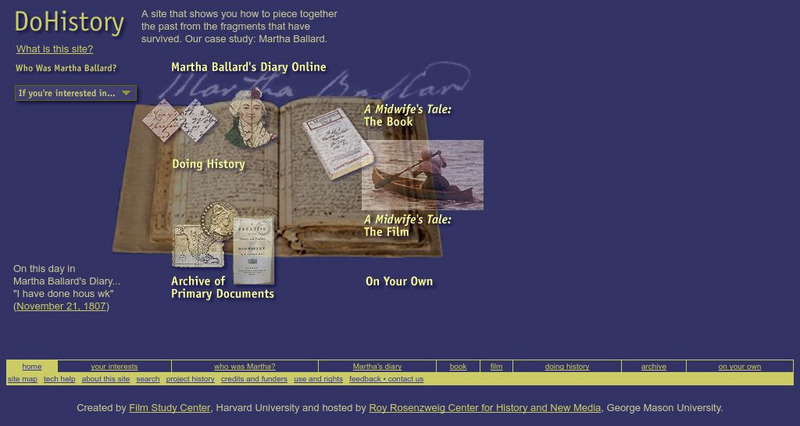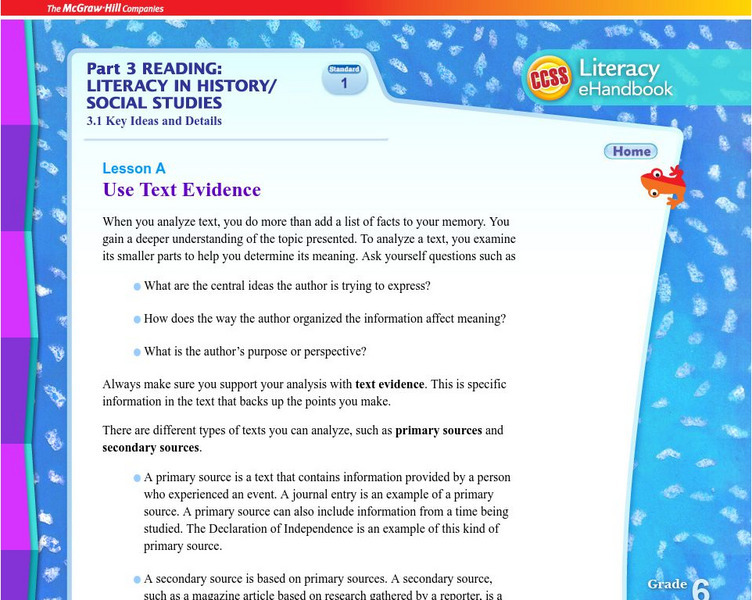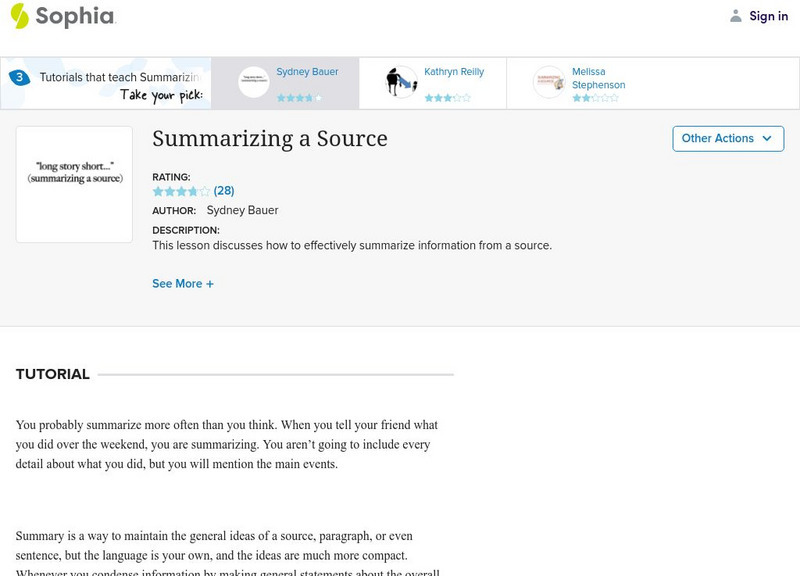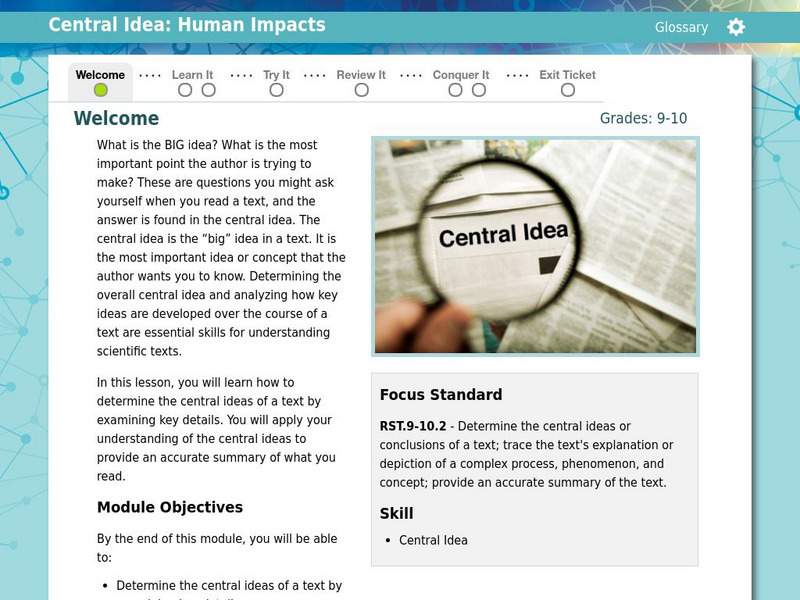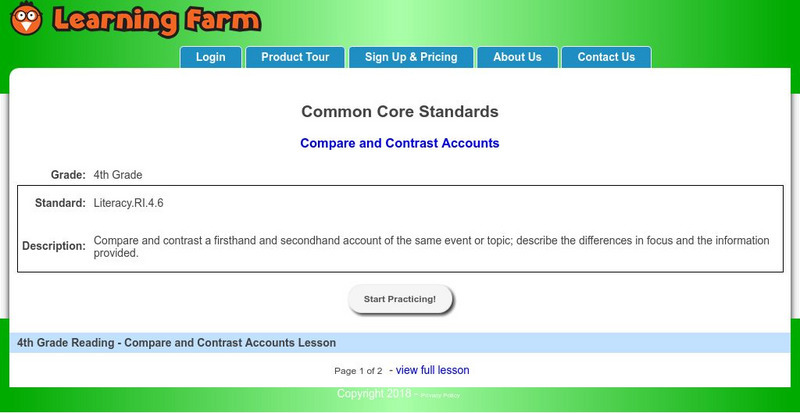Library and Archives Canada
Nlc: Defining Primary and Secondary Sources
Libraries and archives hold documents and books that can be used for your research projects. Learn how to divide and identify them into primary and secondary sources in this tutorial.
Other
Do History: Using Primary Sources
This site explains the difference between a primary and secondary source. It also provides students with questions to ask when gathering evidence about a primary source document.
University of California
Uc Berkeley Library: Critical Evaluation of Resources
Questions to ask yourself when determining if a source is reliable. Discusses difference between primary and secondary source. List of reference sources and links to other sites that teach you how to evaluate sources....
Other
Minnesota Historical Society: Minnesota Communities: Lesson: Primary Sources
Lesson plan with necessary documents attached in PDF format where students read three eye-witness accounts of a car accident and compare them to the secondary source insurance report. Then students read three eye-witness accounts of a...
Curated OER
Mc Graw Hill: Key Ideas and Details: Use Text Evidence
Learn how to analyze primary and secondary sources using text evidence. An example is provided. (Note: Exercises don't load in archived copy.)
Sophia Learning
Sophia: Summarizing a Source
Information that can be read or listened to that discusses two methods of how to write effective summaries as well as how to avoid plagiarism when summarizing informational texts. Finally, examples of literary summaries are provided....
Roy Rosenzweig Center for History and New Media
Teaching History: Interactive Historical Thinking Poster (Secondary)
This is an interactive historical thinking poster. History is an argument about the past. Constructing a narrative about history involves several tasks: Analyzing Primary Sources, Examining Source Information,Using Evidence to Support...
Other
Curriculum Associates: Determining Theme or Central Idea [Pdf]
In this reading comprehension instructional activity unit, students are guided in learning how to find the main theme or idea of a text and understanding how details in the text convey that. Includes lots of exercises and examples, as...
Polk Brothers Foundation Center for Urban Education at DePaul University
De Paul University: Center for Urban Education: Compare Central Idea Across Mult Texts [Pdf]
This Center for Urban Education resource provides a downloadable graphic organizer designed for comparing a central idea across multiple texts.
Thinkport Education
Thinkport: Determine the Central Idea: Human Impacts
Students will learn how to identify the central idea of a text about human impacts by examining key details.
Curated OER
Mc Graw Hill: Informational Text: Determine Central Ideas and Supporting Details
Read a short informational text and determine the main idea and supporting details. Click to check your answers then click on Practice.
Other
Learning Farm: Compare and Contrast Accounts
Students will practice comparing and contrasting a firsthand and secondhand account of the same event or topic.
Energy for Sustainable Development
Esd Bulgaria: Kids & Energy: Electricity
Electricity is the flow of electrical power or charge. It is a secondary energy source which means that we get it from the conversion of other sources of energy, like coal, natural gas, oil, nuclear power and other natural sources, which...

